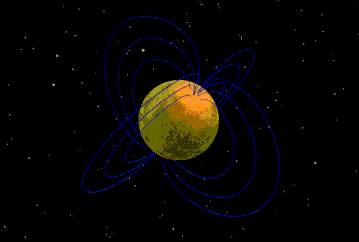It was the energetic blast heard ’round the astrophysical world. On December 27, 2004, scientists detected the most intense cosmic blast ever recorded. It gave off more energy in a tenth of a second than the Sun emits in 150,000 years. Astrophysicists continue to make discoveries about the extreme blast.
The burst originated from SGR 1806-20, a magnetar — a highly magnetized neutron star — about 50,000 light-years away. As the magnetar’s intense magnetic fields shifted and reconnected inside the star, radiation was released. This radiation hit Earth with a spike of gamma rays, followed by a tail of X rays.
Astrophysicists had detected a strong X-ray signal every 7.56 seconds shortly after the burst, corresponding to the magnetar’s 7.56-second rotation. After studying data from NASA’s Rossi X-ray Timing Explorer, an international group of astrophysicists has found quasi-periodic oscillations (QPOs) within the previously known X-ray signal. (The signals were detected only when the magnetar was pointed away, during its rotation, from Earth.)
The astrophysicists detected QPOs lasting from 170 to 220 seconds after the burst and oscillating at of 92.5 Hz. The astrophysicists also analyzed data from 200 to 300 seconds after the blast and found oscillations at 18 Hz and 30 Hz. These signals weren’t as strong as the 92.5-Hz frequency.
These X-ray pulses can tell astrophysicists about the inner workings of neutron stars, just as Earth’s seismic waves tell geologists about Earth’s interior. What the oscillations will show about neutron stars is not yet known, but astrophysicists expect to learn more about the neutron star crust and magnetic field.
Their work was published in the July 20, 2005, issue of Astrophysical Journal Letters .











